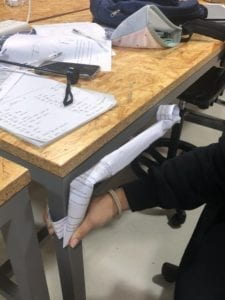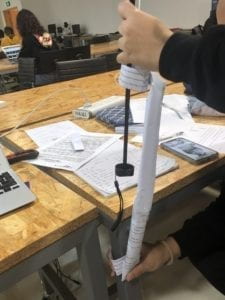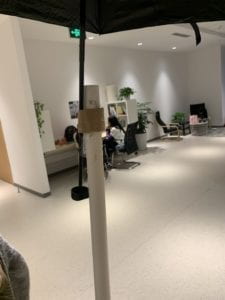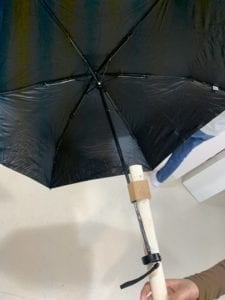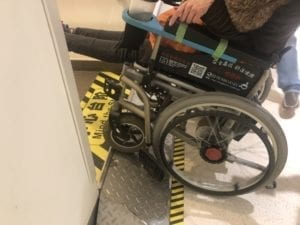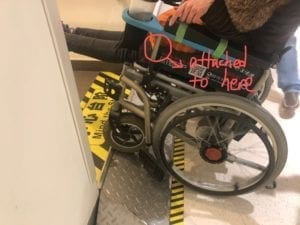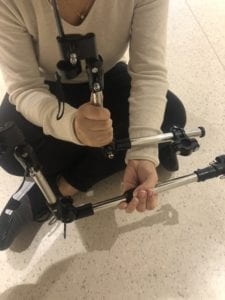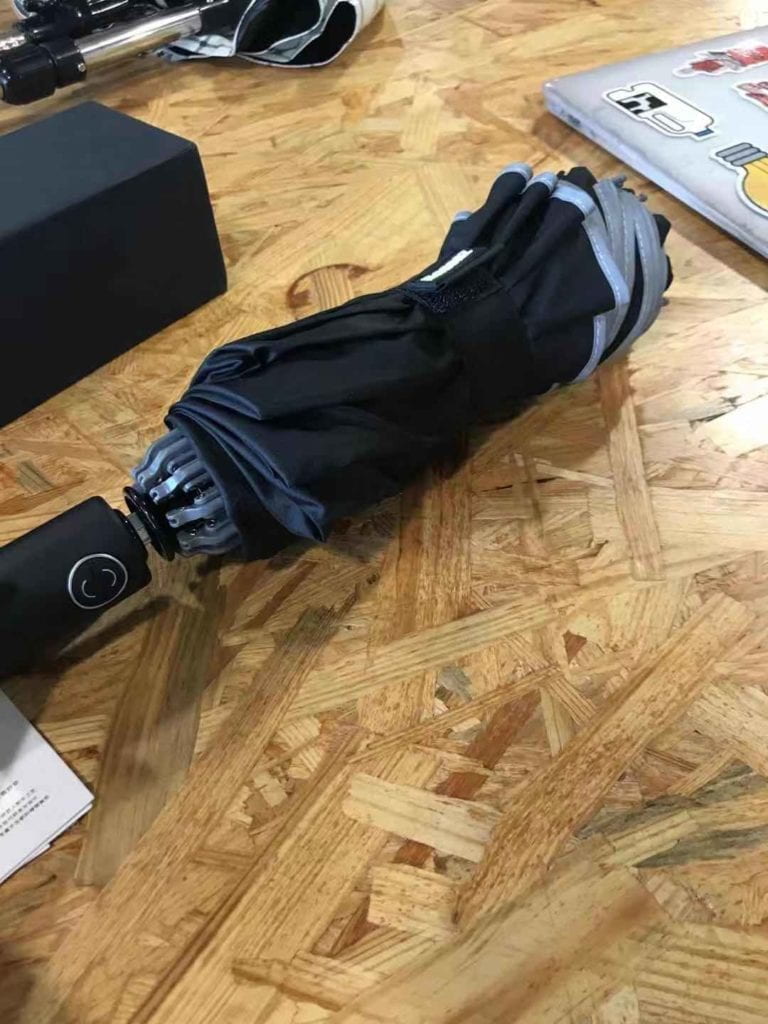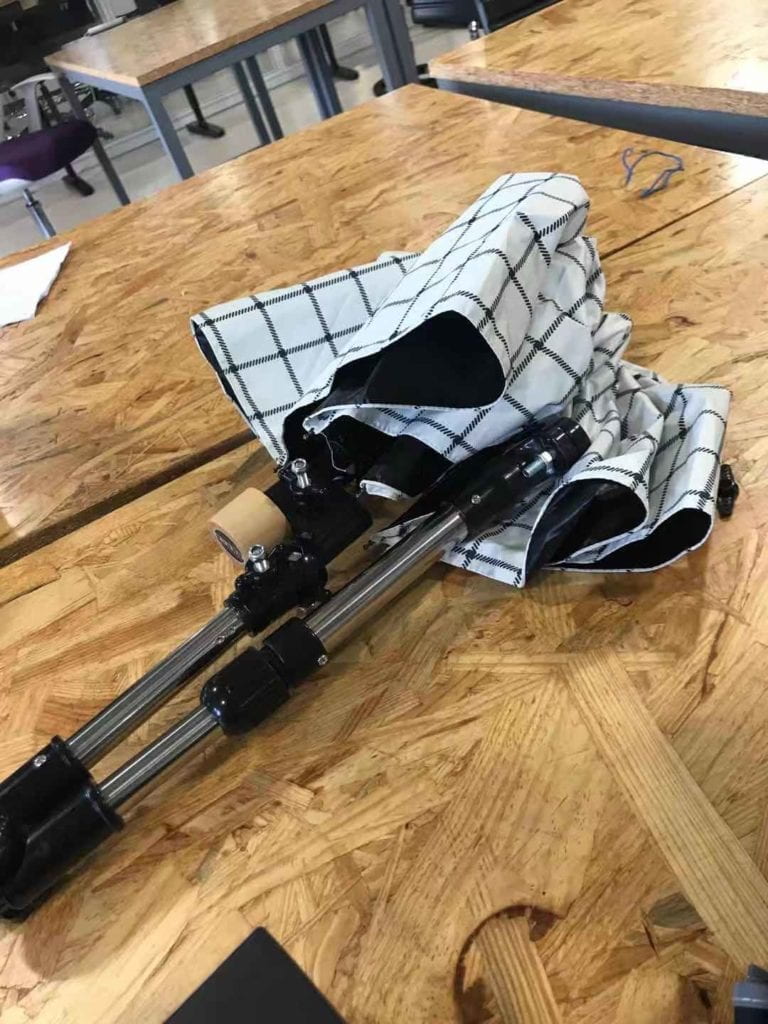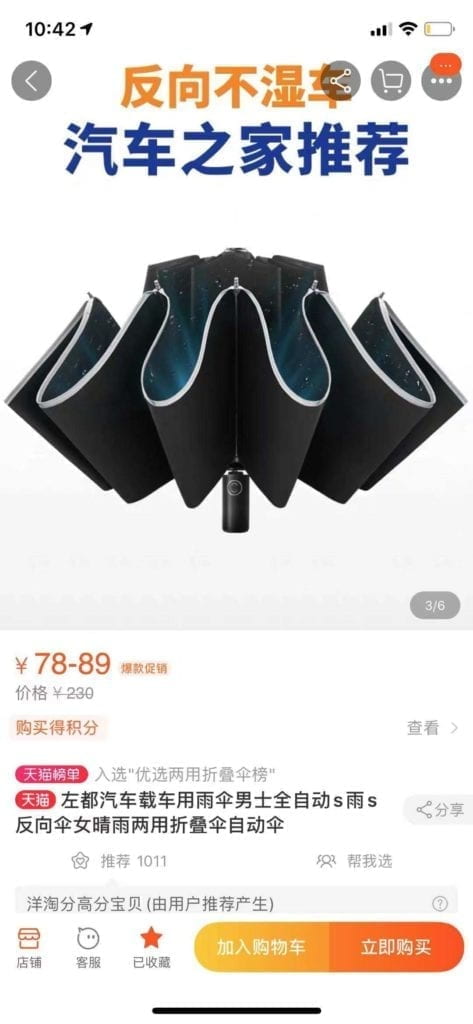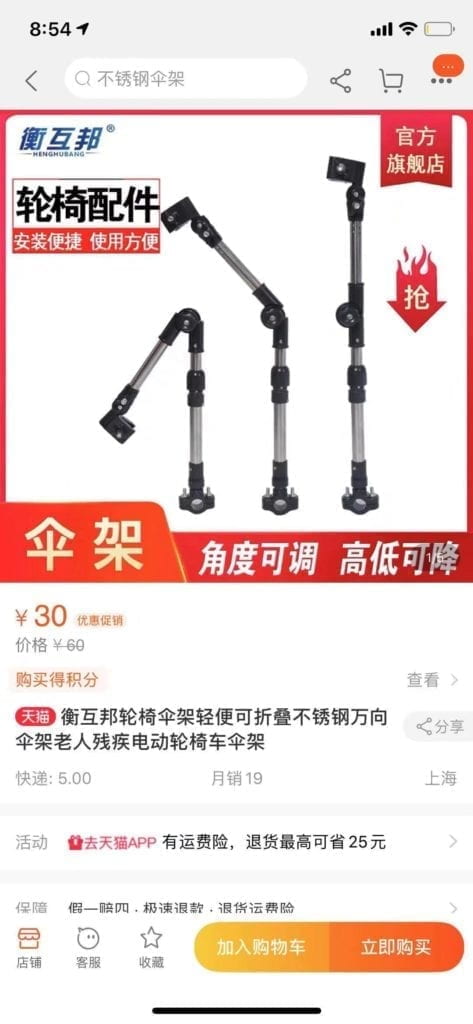Project development (individual)
- Describe your partner
Orange is an energetic, easy-going, and open-minded person. During the interview with her, our communication was smooth. Orange is very observant of life. When asked if there was anything inconvenient for her in our academic building, she quickly gave her an answer. Some elevators for 1-15F have no handrails or lower buttons, and she can’t push the higher ones. Also, some floors do not have accessible toilets for the disabled, and even if they did, the slope of the step of the accessible toilet was too steep for her wheelchair to climb. She is good at finding many small things in life and can inspire my partners and me a lot.
2. What are their desires/challenges/difficulties?
Her main difficulty is that when it rains, it is inconvenient for her to hold the umbrella with one hand and control the wheelchair with the other. She wants us to help her make an umbrella holder that could attach to her wheelchair to support her umbrella. She wants to put away the umbrella stand when it’s not raining. In addition to this major problem, Orange came up with the idea of installing a tray table in her wheelchair. Another idea she brought is that we could help her design an umbrella container where she can put her umbrella in. According to the priority of Orange’s requirements, my partner and I decided to deal with the umbrella stand first, then the container and tray table.
3. What is your project? 1 paragraph description + Pictures or Photos or Videos
Our project is a removable, collapsible, stable umbrella holder. It is mainly made of steel and plastic, as shown in the figure below, so it’s stable enough to support the umbrella. There are many rotating areas on the holder, so the holder can easily adjust the angle according to the needs of Orange. This product can help Orange to free her hands in rainy days, and she doesn’t have to worry about going out in rainy days.
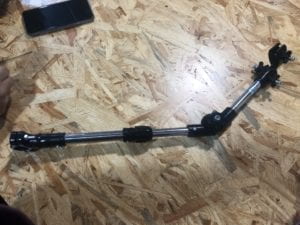
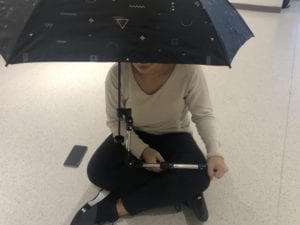
4. Development process. Include photos and video(s)
We made the first model out of paper, determining where the holder should be placed in the wheelchair, how to rotate it, how to fold it. And then, we tested the second prototype made out of the harder material, a water pipe, to see how hard the material should be to support the umbrella and further discussed how to fix the bottom of the umbrella. Then we got the harder stuff, assemble the parts, and discussed how the holder could be attached to the wheelchair. We tried many different rotating angles and positions, and finally found a reasonable model (as shown in the figure below). When not in use, the holder can be easily put away. So far, it makes sense for the theory part. Combined with the pictures of the wheelchair, we have decided how to install it. On Tuesday, we will adjust the model to a suitable length based on the actual wheelchair.
